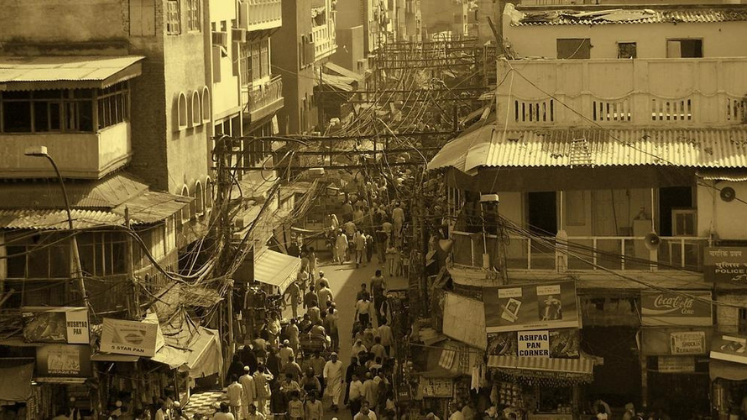 Ordnance: War + Architecture & Space investigates how strategies of warfare occupy and alter built and other landscapes. Ranging across the modern period from the eighteenth century to the present day, the book presents a series of case-studies from the infrastructures of the battlefield to the logistics of the domestic realm. Lorenzo Ferrari finds that the inter-disciplinary approach will ensure the book appeals to readers interested in architecture, history, geography, politics and security.
Ordnance: War + Architecture & Space investigates how strategies of warfare occupy and alter built and other landscapes. Ranging across the modern period from the eighteenth century to the present day, the book presents a series of case-studies from the infrastructures of the battlefield to the logistics of the domestic realm. Lorenzo Ferrari finds that the inter-disciplinary approach will ensure the book appeals to readers interested in architecture, history, geography, politics and security.
 Ordnance: War + Architecture & Space. Gary A. Boyd and Denis Linehan (eds.). Ashgate. December 2012
Ordnance: War + Architecture & Space. Gary A. Boyd and Denis Linehan (eds.). Ashgate. December 2012
When we think of war, we often think to the destructive impact that war has on lives, cities, and countries. Ordnance: War + Architecture & Space invites us to think differently, and to look at the constructive impact of war. In particular, it invites us to look at the role played by warfare “in the formation of the built environment and the human landscape.” On one side, the book considers the ways in which the expectation and the occurrence of warfare impact on the design of buildings, cities, and landscape. On the other side, the book looks into the ways in which architecture and society deal with the traces left by warfare in cities and landscape.
The book was edited by architect Gary A. Boyd and by geographer Denis Linehan, both based at the University of Cork. Ordnance offers readers an excellent overview of fresh thinking in the field, as most of the contributors are doctoral students and post-docs. Almost all contributors come from Anglo-Saxon countries, and in particular from the British isles, as the choice of case studies tends to mirror.
Ordnance adopts a deliberately wide approach to analysing the relations between warfare and architecture, combining essays with different approaches, chronological limits, and disciplinary perspectives. Such heterogeneity is brought under control by the division of the book into four specific parts: warfare and the cities; warfare and everyday spaces; warfare and the landscape; and spaces of memory. The division into parts is not sharp though, and several threads run across them.
One recurring thread concerns the way in which the expectation of war has affected architectural design. Essays analyse the issue at different scales, considering the case of a whole city (Savannah), of the German railway network and of camouflage techniques. James Robinson’s analysis of camouflage techniques in the 1930s and 1940s Britain highlights the way in which architectural design was affected by the necessity of concealing buildings from enemy planes. The expectation of warfare prompted the release of national guidelines for the siting, layout, and form of new buildings. Not only did camouflage techniques evolve in response to new defence needs, but the larger architectural debate was affected. The new “self-concealing architecture” re-appropriated and at the same time distanced itself from contemporary modernist architecture.
Another recurring thread in Ordnance concerns the way in which built military heritage is dealt with after the end of warfare. Two essays focus on the cases of the Atlantikwall and of the Maginot line. Per Strömberg looks instead at the “spatial aspect of the aesthetical appropriation” of deserted Cold War bunkers in Scandinavia. Some of them have been turned into luxury hotels, others into exhibition venues and stages, others into museums, etc. Strömberg reflects upon the different processes of appropriation of such deserted spaces, comparing them to the art practices of readymades and found objects. An interesting interplay of different references, meanings, and contexts is established. The outcome of the appropriation is ambiguous though: while it can economically put the sites into value and favour their preservation, it may also lead to their trivialization and to emotional drawbacks.
One more recurring thread concerns the spaces of memory. Memory is contested in some of the cases considered, such as the Irish border or the divided cities. In other spaces memory is not contested: Andrew Keating analyses for instance the burial grounds of British soldiers who died in the Crimean war. Keating shows how such burial grounds were turned into spaces of collective remembrance between the 1850s and the 1880s. In that period the British public opinion pressed the government to intervene against desecration and neglect of Crimean burial grounds, which were gradually turned into sacred spaces for the whole nation. A modern sensibility for the proper treatment of dead soldiers and of their burial grounds was established.
Individual essays are all enriched by numerous figures, and they are stimulating, enjoyable, and clear for reading. What is not always clear is the structure of the book. The heterogeneity of case studies and perspectives should have encouraged more explicit interventions to ensure the cohesion of the whole book. Choices of chapter allocation and ordering seem sometimes objectionable – quite tellingly, there are differences in these respects between the outline described by the editors in the introduction and the actual book outline. However, the most pressing weakness of Ordnance is the absence of a general conclusion. A general final chapter would have greatly improved the cohesion of the book, highlighting recurring threads and issues and drawing some synthesis out of such a rich set of essays.
Despite these weaknesses, the idea underlying the book remains very interesting and fascinating. The inter-disciplinary approach adopted is particularly valuable, as it links and combines different domains and points of view on the same issue. The inter-disciplinary approach also ensures that the book will appeal to a variety of readers: those interested in architecture, history, geography, politics or security can all easily find stimulating elements in Ordnance.
————————————————————-
Lorenzo Ferrari is a PhD student at the IMT Institute for Advanced Studies in Lucca. He works on European integration history and on the history of international relations, focusing on the external policies of the EC/EU. He holds a BA in International Studies and an MA in Contemporary History, both from the University of Bologna. Lorenzo also tweets @lorenzferrari Read more reviews by Lorenzo.








1 Comments